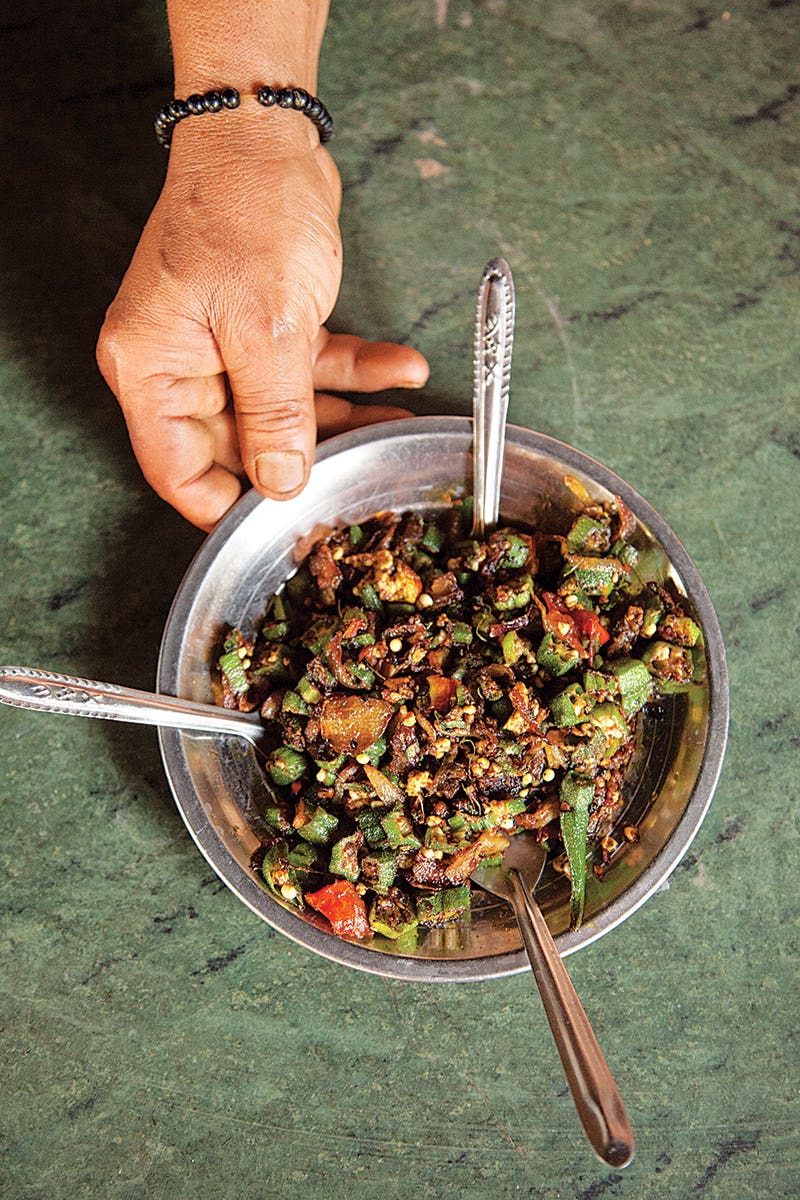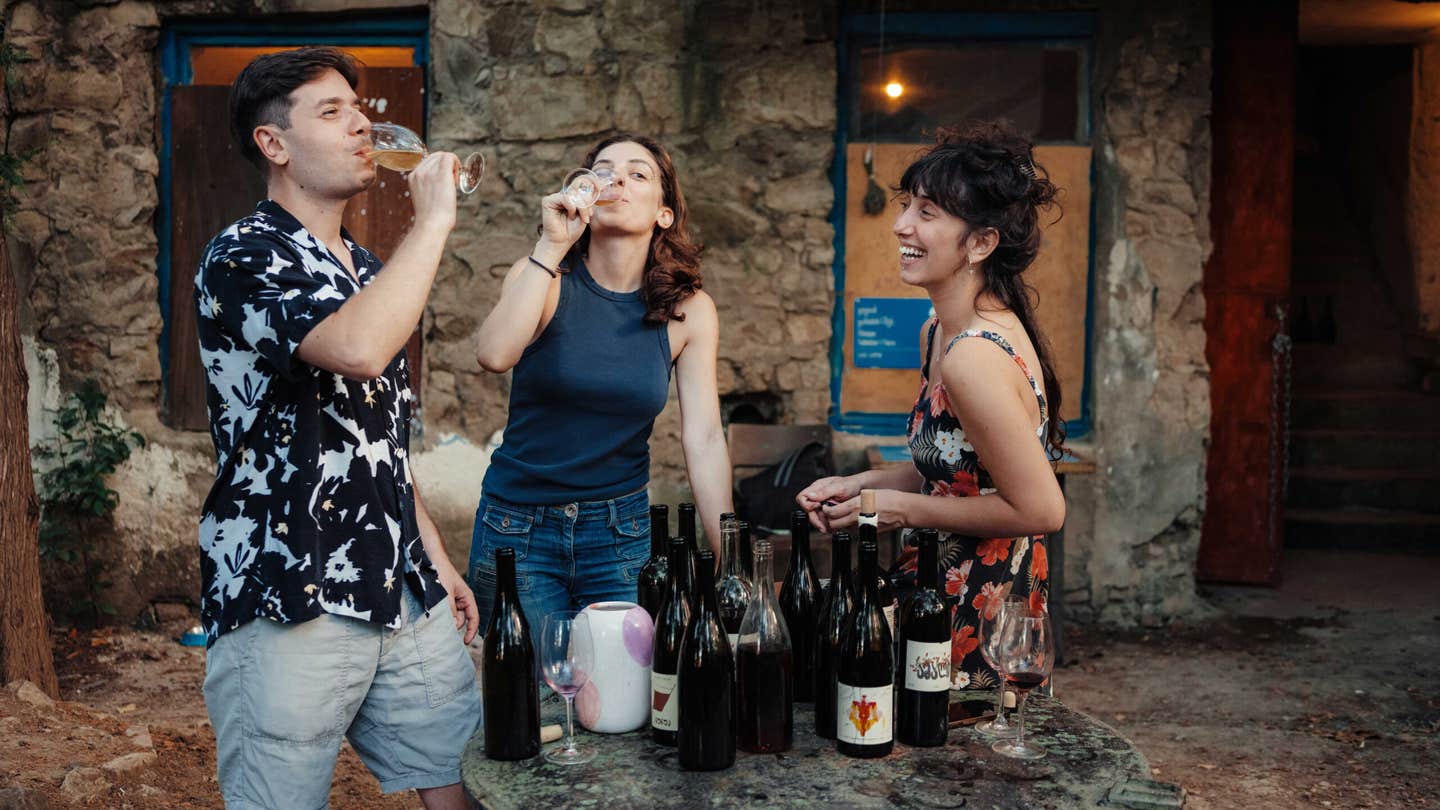
The Rewards of the Road
We are hot, tired, and hungry when we spot a _dhaba,_one of the ubiquitous truck-stop eateries found along India’s highways, at half past noon. I have been navigating potholed roadways since sunrise with my friends Vatsal, Thuy, and Gabriel in a pair of mud-splattered three-wheeled carts. We’re making our way west from the dripping wet northeast state of Meghalaya to Jaisalmer in the desert region Rajasthan for the Rickshaw Run, a 2,000-mile rally across India for charity. I gear down and steer the sputtering auto rickshaw onto a massive bumpy dirt lot.
Along the far edge of this dusty field is the dhaba, the barest structure framed by a concrete back wall and a low-slung thatch roof held up by bamboo poles. Its kitchen and four khatiya, makeshift beds constructed from a wooden frame wrapped with jute ropes, are exposed to the open air. In front, a barefoot boy draws water from a hand-pump well and, a stone's throw away, a dozen young men in tank tops splash rainwater from a concrete cistern, washing themselves and their motorcycles.
We collapse onto two of the khatiyas. The young boy approaches our table—just a wood board set across the wooden frame—with the customary welcoming dish of dhabas everywhere: a round metal tray of sliced tomatoes, cucumbers, red onions, and lime halves, along with a plastic plate of roasted green cayenne chiles.
Typical of dhabas all over rural India, this one beckons truck drivers, who mostly hail from the populous northern states, with the heavily spiced home cooking of their birthplace. Among the day's offerings are stir-fried vegetables, paneer (yogurt cheese) dishes, a dal of stewed chickpeas_,_ and various curries. Vatsal nods subtly to the proprietor, a wiry man with a shock of black hair, and he comes over to take our order.
One cook starts chopping vegetables at the counter. To his left, the chapati cook is fast at work at the coal-fired tandoor oven, rolling out rounds of dough and toasting them on the domed surface of an inverted tawa (a wok-like pan) set over a burner. Finally, he lays each flatbread directly on the coals, flipping each one over once it puffs up to brown the other side.
When the chapati and other dishes arrive at our table, I tear off a strip of the smoky flatbread and dip it into the dal. Many dals are smooth, but this chana (split chickpea) dal is hearty like a meat stew, with tender bits of tomato, caramelized onion, and an abundance of chiles bobbing in a thick turmeric-tinted broth. The baingan bharta_is equally tantalizing—_velvety bite-size chunks of eggplant draped in a rich savory gravy of ginger-garlic paste, green chiles, curry powder, and cumin seeds.
“You should get some of the bitter gourd before Thuy eats it all,” Vatsal says.
Strips of the crocodile-skinned squash in the karela sabzi are nutty from pan-frying in mustard oil and punctuated with sweet sautéed onions and lemon juice. But my favorite is the _bhindi masala,_a stewed okra dish punched up with bitter fenugreek, smoky ground chile, and the sour green mango powder amchoor. The taut okra, slicked with a spiced mix of tomato and red onion, pop when bitten, releasing their seeds.
The proprietor refills our dishes until we beg him to stop. Marking the end of the meal, the young boy reappears with two metal bowls of fennel seeds and sugar crystals. I scoop them into my palm and put them in my mouth. Closing my eyes, I savor their bittersweet flavor and listen to the soothing murmur of Hindi and Bihari from nearby tables, where truck drivers lean back in their chairs. Soon we must return to our rickshaws.
We will encounter many more hours of cratered roadways and chaotic traffic, lumbering livestock and hair-raising detours, before we reach the finish line. But tomorrow will bring another day, another dhaba, another dal.
Keep Reading
Continue to Next Story










